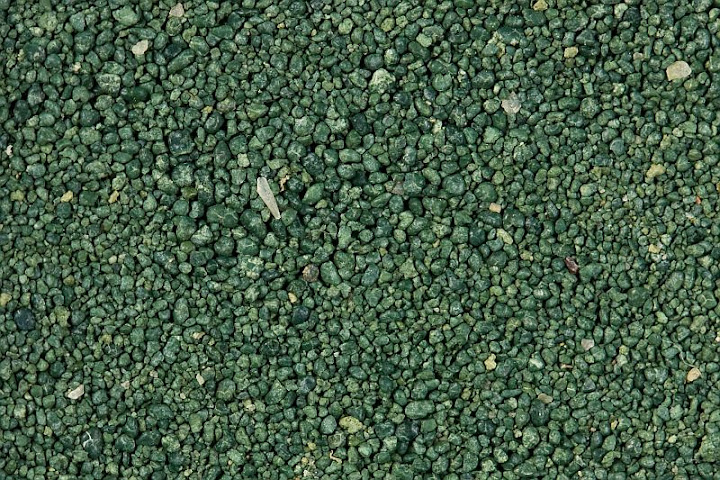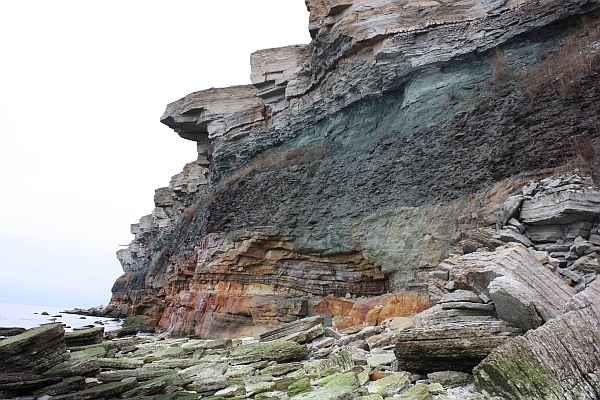Glauconite is a green-colored mineral. It is structurally similar to micas and is sometimes considered to be one of the mica minerals. Despite that it appears usually in rounded ill-formed platelets which are not at all similar to typical flakes of common micas like muscovite and biotite. However, it still possesses perfect cleavage like other micas, we just don’t see it. Sometimes it is included in the clay mineral group. Whatever the case, glauconite is definitely a sheet silicate. These confusing nuances only show that our classification principles are imperfect and we shouldn’t take them too seriously. They are there only to guide us.

Glauconite pellets in a beach sand from France. Width of view 20 mm.
Glauconite is usually a component of sandstones. It occurs in sand-sized granules in marine sandstones. If abundant, it gives distinct green color to sandstones that are called greenbeds or greensands. It may also occur in carbonate rocks. My home country Estonia has both glauconitic sandstone and glauconitic limestone layer (limestone on top of the sandstone).
Glauconite may be abundant component of beach sand if greenbeds are exposed in a coastal cliff. The chemical formula of this mineral is very complex. This is typical to clay minerals. They are all structurally and compositionally variable and exceedingly difficult to understand. That’s probably why we still know surprisingly little about this fairly common mineral. Glauconite forms mostly at the expense of another and more common sheet silicate biotite.
Glauconite is pretty distinctive with its bluish-green and rounded pellets, but not all green granules in sand are glauconitic. Chlorite may form similar grains. Glauconite may occur together with pyrite. They both need reducing conditions to form which is probably caused by the presence of decaying organic matter which consumes all free oxygen.

Baltic Klint near Paldiski (Pakri Peninsula) in Estonia. The klint section is composed of limestone (topmost layer), glauconitic sandstone (greensand), kerogene containing alum shale (all Ordovician) and a partly phosphatic Cambrian (mostly) sandstone with layers of shale. This klint section is about 25 meters high.

Grains in limestone. The width of the sample from Estonia is 13 cm.

Glauconite sandstone from Estonia. The width of the sample is 5 cm.
Leave a Reply